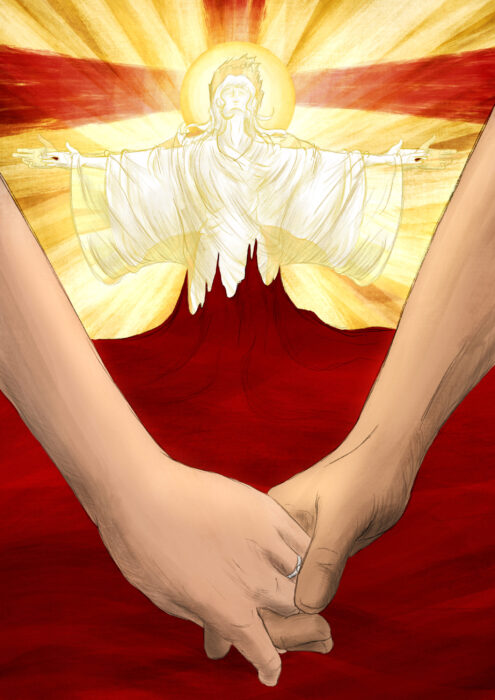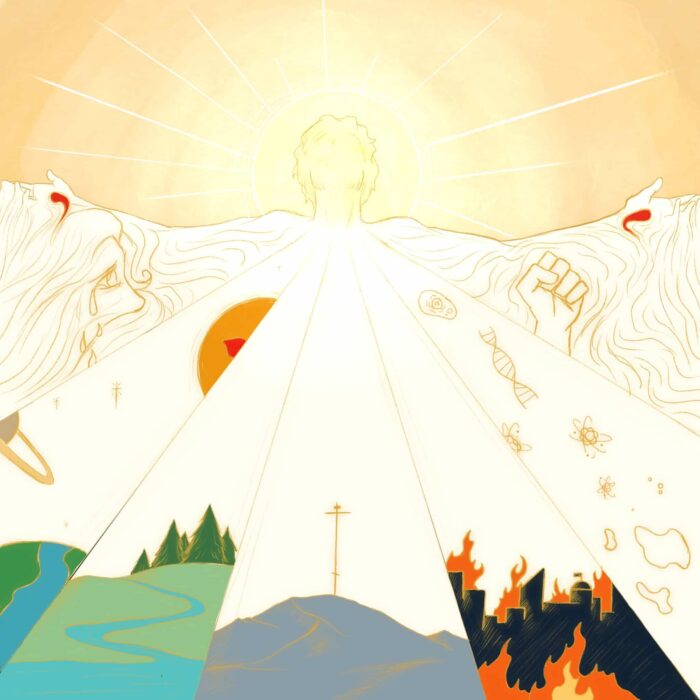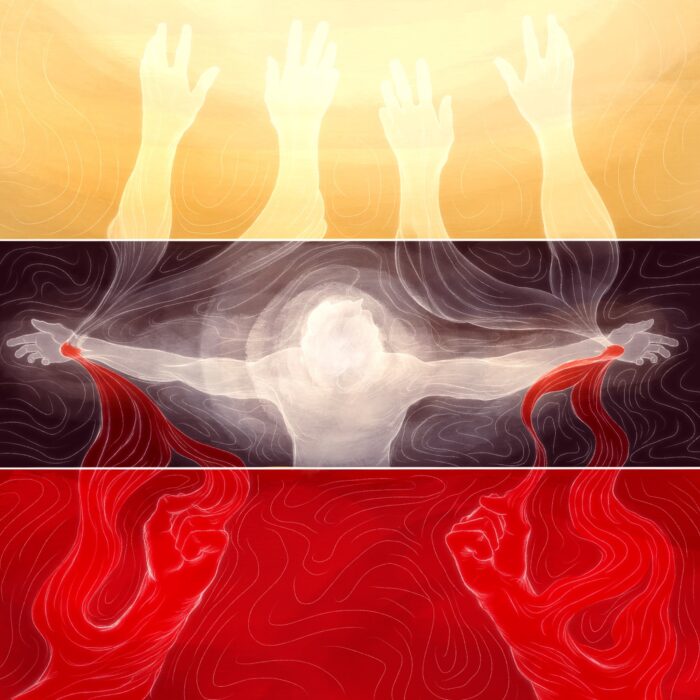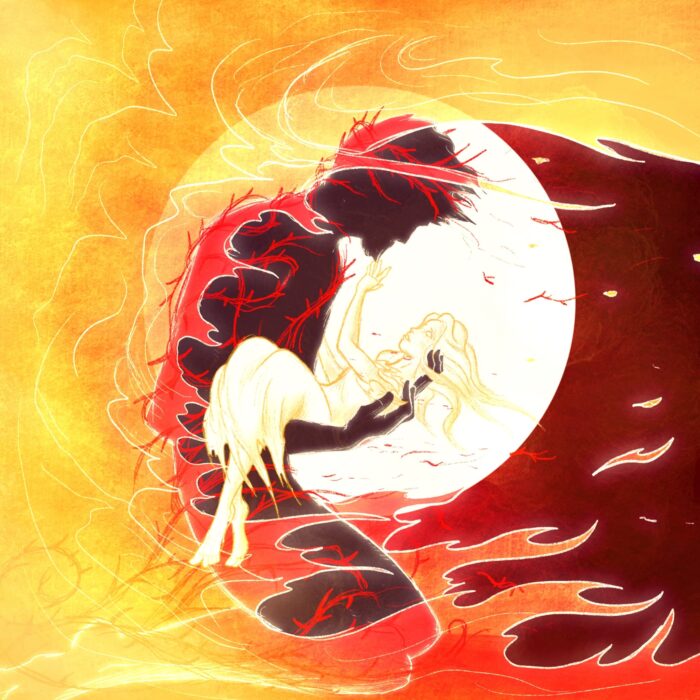
Husbands, love your wives, as Christ loved the church and gave himself up for her, that he might sanctify her, having cleansed her by the washing of water with the word, so that he might present the church to himself in splendor, without spot or wrinkle or any such thing, that she might be holy and without blemish. In the same way husbands should love their wives as their own bodies. He who loves his wife loves himself. For no one ever hated his own flesh, but nourishes and cherishes it, just as Christ does the church, because we are members of his body. “Therefore a man shall leave his father and mother and hold fast to his wife, and the two shall become one flesh.” This mystery is profound, and I am saying that it refers to Christ and the church.
– Ephesians 5:25-32
Here is a sketch created for a FOE supporter and based on Ephesians 5:25 and the following verses. Read below for a full description of the imagery.
Just as man and woman are two and yet become one flesh through the union of love in marriage, so too (and more fundamentally) Christ and His people, the Church, are two and yet become one (not flesh, but spirit) through the union of His love, supremely manifest at the cross. So, two becoming one, unified in love (essentially in Christ and His Church, echoed in Man and Woman) seems central to the mystery. And it is this idea of two becoming one that allows Paul to refer to the Church as the body of Christ as well as His bride, just as he refers to the wife and the husband’s body, even though she is a separate person from Him.
The central act of love that Paul highlights in this passage is Christ’s death for the sake of His Bride (…”Christ loved the church and gave Himself up for her”). This is the sort of love with which he calls husbands to love their wives….a love that lays itself down, gives itself up, dies daily – in large and small ways – for the good of the beloved. Then, in verse 28, Paul moves fluidly from the idea of self-giving love to the idea of oneness of flesh between man and woman…Just as we give ourselves up for our own bodies (which seems strange to say, since our bodies are ourselves….) so too husbands ought to give themselves up for their wife, with whom they are now one flesh. As was the case with self-giving love, this sort of love “one–flesh” love also finds its source in the love of Christ and the Church since His people – His Bride – are members of His own body.
So…in this picture I wanted to emphasize these two elements of the “mystery”:
First, Christ (and husbands) love chiefly through self-outpouring sacrifice.
And Second, For Christ to love the Church (and husbands to love their wives) is the same as for Christ to love Himself (and husbands to love themselves) since Lover and Beloved have become one.
I tried to show the first part by placing both Christ and the Church in a “cruciform” position. Jesus has sanctified (denoted by the white color of the Church) His bride, by His self-giving love at the cross. The cross is also alluded to in the three red stripes radiating from Christ’s halo. A third depiction of the sacrificial and sanctifying love of Christ the fact that both Christ and the Church are rising up out of the purifying blood that was shed on the cross. The hands of husband and wife standing out against the red background are also a reminder that the same sort of self-giving love that purified the Church is to be echoed in the husbands love for his wife….
The One Flesh / One Body aspect of the mystery is mainly depicted by the overlapping and interweaving of Christ and the Church. I wanted the viewer to at first see just one figure and then, on closer examination, realize that there are two…I made it intentionally difficult to see which lines belonged to Christ and which lines belonged to the Church as a way of picturing the unity with Himself into which He draws His people. The same one flesh union is alluded to between husband and wife through the joining and interlocking of their hands.




